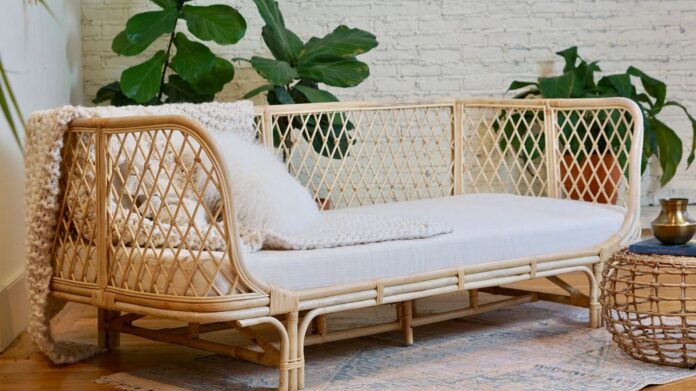Selecting the perfect furniture for your indoor or outdoor spaces involves navigating a plethora of options, each with its own set of qualities and characteristics. Among the most popular choices in the realm of furniture materials are pure wicker and artificial resin wicker. Both materials bring their unique attributes to the table, catering to different preferences and needs.
In this comprehensive comparison, we delve into the intricacies of pure wicker and artificial resin wicker furniture, offering insights into their features, benefits, and considerations to aid in your decision-making process.
Pure Wicker: A Timeless Elegance
Origin and Craftsmanship: Pure wicker, often woven from natural materials like rattan, bamboo, or willow, boasts a rich history that dates back to ancient civilizations. This craftsmanship involves harvesting, processing, and weaving the pliable stems into intricate patterns that have been admired for generations.
Aesthetic Appeal: The organic charm of pure wicker is unmatched. Its woven texture and rustic appearance lend a timeless elegance to both indoor and outdoor spaces. The natural patterns and variations in color create a sense of authenticity and warmth that resonates with a wide range of design styles.
Benefits:
- Eco-Friendly Choice: Crafted from renewable resources, pure wicker aligns with sustainable living principles. Its biodegradability and minimal environmental impact make it an eco-conscious option.
- Breathability: The woven structure of pure wicker allows for excellent airflow, preventing the growth of mold and mildew, particularly in humid conditions.
- Customization: Artisans can intricately weave pure wicker into various patterns and designs, offering customization options that suit diverse aesthetic preferences.
- Timeless Aesthetics: The rustic and timeless appeal of pure wicker makes it a versatile choice for various design styles, from traditional to bohemian.
Artificial Resin Wicker: A Contemporary Adaptation
Development and Attributes: Artificial resin wicker emerged as a modern alternative to address the limitations of pure wicker. Crafted from synthetic materials like polyethylene, resin wicker offers enhanced durability and weather resistance.
Durability and Maintenance: Resin wicker’s synthetic nature equips it with remarkable resistance to outdoor elements, including UV rays, moisture, and fluctuations in temperature. This durability makes it an ideal choice for outdoor furniture. Moreover, resin wicker requires minimal maintenance; a simple cleaning with water and mild soap is usually sufficient.
Color Variety and Consistency: Resin wicker is available in a vast array of colors, allowing for greater design flexibility and coordination with existing decor. Additionally, its synthetic manufacturing process ensures uniformity in color and texture across various pieces.
Benefits:
- Strength and Longevity: The synthetic composition of resin wicker often results in greater strength and longevity compared to its pure counterpart.
- Weather Resistance: Resin wicker’s ability to withstand harsh weather conditions, including rain and intense sunlight, makes it a practical choice for outdoor furniture.
- Design Flexibility: With a wide range of colors and styles available, resin wicker offers versatility that suits contemporary and modern design aesthetics.
Choosing Between Pure and Resin Wicker: Key Factors
Aesthetic Preference: Consider the overall aesthetic you wish to achieve. Pure wicker’s natural, rustic charm might appeal to those seeking a timeless and organic look, while resin wicker suits those aiming for a modern and resilient appearance.
Maintenance and Location: Evaluate your maintenance preferences and the furniture’s intended location. Resin wicker’s low maintenance and weather-resistant properties make it a sound choice for outdoor settings, especially in areas with extreme weather conditions.
Environmental Concerns: If environmental sustainability is a priority, pure wicker’s natural origins and biodegradability might align better with your values.
Budget and Longevity: While resin wicker often has a higher upfront cost due to its durability and weather resistance, its long-term benefits in terms of reduced maintenance costs could offset the initial investment.
Conclusion
The choice between pure wicker and artificial resin wicker ultimately depends on your design preferences, lifestyle, and intended use. Both materials offer distinct advantages that can elevate your living spaces. Whether you opt for the timeless allure of pure wicker or the modern resilience of resin wicker, each choice carries its own unique charm that contributes to comfortable and stylish interiors or inviting outdoor retreats.








